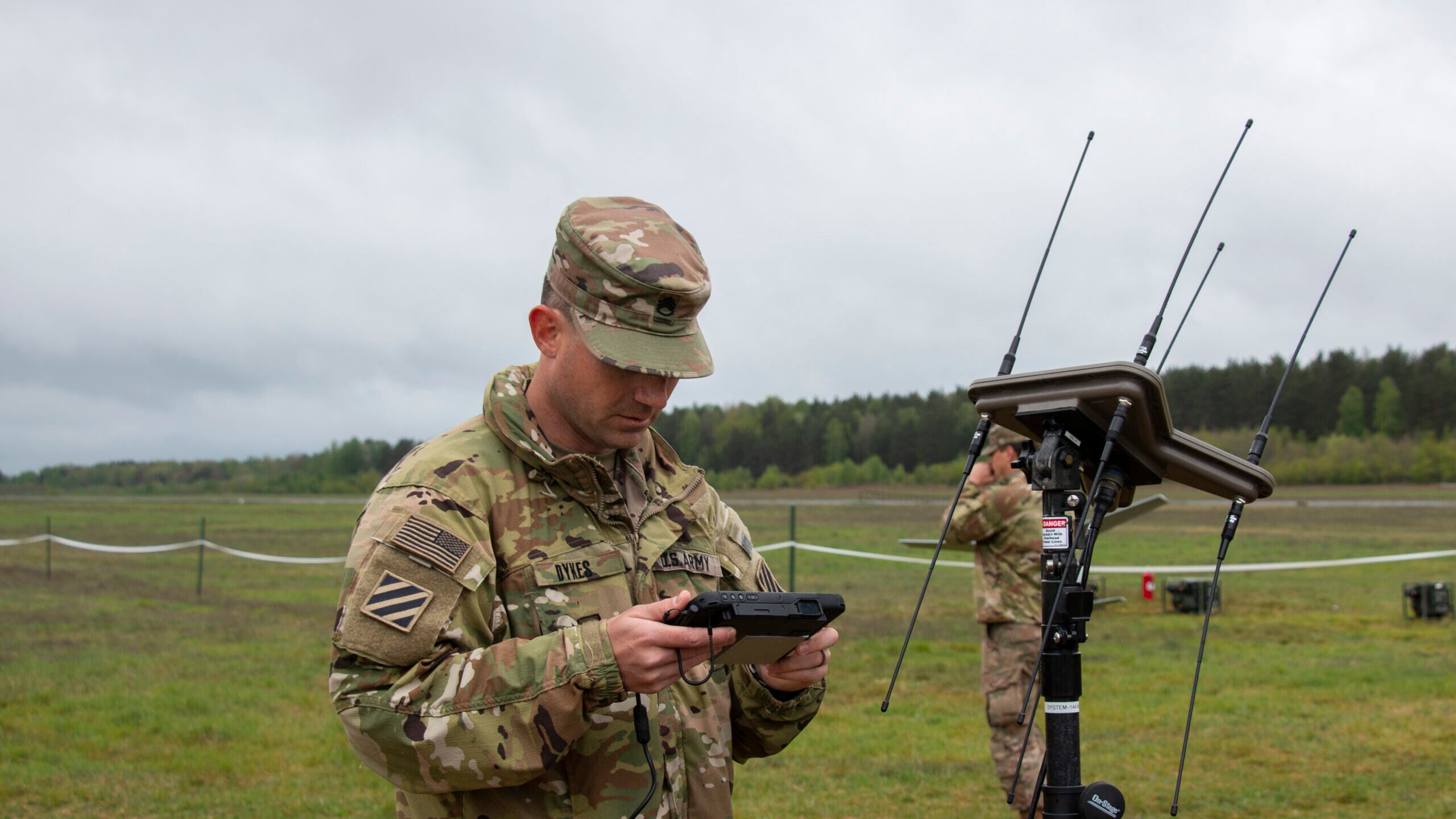
Staff Sgt. Paul Dykes, a 17E Electronic Warfare Specialist with 9th Brigade Engineer Battalion, demonstrates how to utilize electronic warfare equipment to Polish military officials May 11, at camp Ziemsko Drawsko-Pomorskie Training Area, Poland. (U.S. Army photo by Sgt. Andres Chandler)
WASHINGTON — The Senate Armed Services Committee is leaning in on electronic warfare and spectrum operations, echoing concerns also simmering on the other side of Capitol Hill — and at the Pentagon — that the Defense Department may be lagging behind China and Russia.
The SASC version of the fiscal 2024 National Defense Authorization Act (NDAA), passed last Friday, “requires the Department of Defense to address deficiencies in the electronic protection of defense systems,” according to an executive summary.
The bill also pushes DoD to finally pull the trigger on a plan to establish a Joint Electromagnetic Spectrum Center at US Strategic Command. The center was initiated in 2021, at the same time Defense Secretary Lloyd Austin signed off on an implementation plan for the department’s 2020 Electromagnetic Spectrum Superiority Strategy to counter the growing prowess of Beijing and Moscow in electronic warfare. The goal of the center is to identify gaps in and improve capabilities across the US military to fight through attacks on spectrum access.
Since that time, however, the center’s official status has been awaiting approval by the Office of the Secretary of Defense.
The SASC defense policy bill further would codify the the Pentagon’s informal, but high level, Electronic Warfare Executive Committee, created back in 2012 by then-Deputy Defense Secretary Bob Work to provide advice on EW issues.
Finally, Senate lawmakers would mandate an assessment of DoD training range capacity for EW training, an issue their counterparts on the on the House Armed Services Committee also raised in their version of the NDAA, passed June 22.
House lawmakers want a briefing from Defense Secretary Lloyd Austin on the current requirements for electromagnetic spectrum (EMS) training. According to an amendment introduced by Rep. Elise Stefanik, R-N.Y., lawmakers are concerned “that highly restrictive training environments and necessary administrative coordination may restrict efforts to train the Joint Force and integrate [electronic warfare] into training events.”
The amendment says the briefing should outline how units plan and conduct EMS exercises and training. Specifically, it should address in part “information on the process and timeline for planning EW, EMS-intensive, or multi-domain operations training, including coordination with external agencies” and examples of successful MDO [multi-domain operations] training events that can be replicated across the military services.
The briefing should also include “recommendations for creating an enduring approval process for pre-approved frequencies reserved for military use” and “permissive parameters to conduct routing multi-domain operations training such that external approvals are either not required or significantly reduced,” among other things.






















